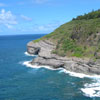I had a client ask me today how to safely remove the decades of wax build up on an antique cherry table he owns.
I told him I didn't know but I could ask people who did.
So I'm asking.
I haven't seen the table yet but he's been a client for over 30 years so I know it will be a pretty special table. He said he has tried turpentine and alcohol and they seemed to work but were tediously slow.
Hoping someone here has some experience with this.





 Reply With Quote
Reply With Quote


